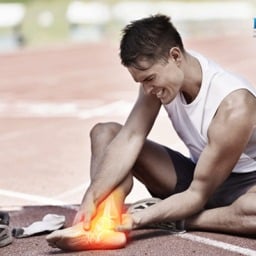
Chronic pain, often defined as pain persisting for more than 12 weeks, can significantly compromise the quality of life for those affected. It brings about a cascade of challenges that go beyond physical discomfort, impacting emotional well-being, sleep patterns, and even interpersonal relationships. While surgical interventions and invasive procedures are sometimes necessary, non-invasive therapies offer promising solutions for effective chronic pain management. By prioritising patient safety and comfort, these therapies are a holistic approach to pain relief that aims to minimise risks and side effects while maximising benefits.
1. Physiotherapy
Physiotherapy is a gentle and effective alternative in the realm of non-invasive chronic pain management. It involves a diverse range of techniques that are tailored to the unique needs of patients. Through a combination of targeted exercises, manual therapy, and comprehensive patient education, physiotherapists work to restore movement, improve flexibility, and strengthen the affected areas. This approach not only alleviates pain but also empowers patients to take on an active role in their recovery process.
2. Osteopathy
Osteopathy delves deep into a holistic philosophy that views the body as an intricate web of interconnected systems, each influencing the others in different ways. This perspective underpins the core principles of osteopathic practice, which seeks to harness the body’s innate ability to heal itself. At the heart of this treatment lies a hands-on approach that emphasises the manipulation of the musculoskeletal system to address chronic pain and promote well-being. Osteopathic practitioners employ a range of techniques that encompass gentle movements, stretching, and palpation to assess and adjust the body’s structural alignment. By doing so, they aim to alleviate tension, improve joint mobility, and correct any imbalances that might contribute to chronic pain.
3. Dry Needling
Dry needling, often mistaken for acupuncture due to its utilisation of needles, stands apart as a distinct therapeutic technique rooted in the modern understanding of musculoskeletal pain. This technique involves the precise insertion of fine needles into trigger points found within muscles, tendons, or connective tissues, initiating a range of physiological responses that ultimately result in pain relief and improved functionality. By promoting blood flow and relaxing tight areas, dry needling can be particularly effective for individuals dealing with chronic muscle-related pain conditions such as fibromyalgia and myofascial pain syndrome.
4. Sports Therapy
While the term “sports therapy” may bring up images of athletes striving for peak performance, its impact extends far beyond the realm of sports. In fact, sports therapy has demonstrated its efficacy in managing chronic pain, offering a versatile toolkit that can benefit individuals from all walks of life. Sports therapists utilise a combination of techniques such as massage, stretching, and targeted exercises to address pain and improve physical function. Most importantly, sports therapy aims not only to alleviate pain in the present but also to empower individuals with strategies to prevent its recurrence. By fostering proper movement patterns, enhancing muscle strength and flexibility, and promoting overall physical awareness, sports therapists empower their clients to take control of their own well-being.
5. Clinical Pilates
Clinical Pilates embodies a fusion between the principles of traditional Pilates and a clearly defined focus on rehabilitation. This approach transforms the practice from a mere exercise routine into a tailored therapy programme that caters to the unique needs of individuals, especially those grappling with chronic pain. It involves a series of deliberate, controlled movements that have the potential to enhance core strength, flexibility, and overall posture. Unlike high-impact exercises that might exacerbate existing pain, clinical Pilates is characterised by its gentle, low-impact nature. This attribute makes it particularly suitable for individuals seeking to manage chronic pain without causing further discomfort or strain.
If you or a loved one are struggling with chronic pain and are seeking effective non-invasive treatment options, consider taking the next step towards a pain-free life by reaching out to us at Edge Healthcare, a physiotherapy clinic in Singapore. Our dedicated team of experienced professionals specialises in a range of non-invasive therapies designed to provide relief, promote healing, and restore your overall well-being.
Contact us today to schedule a consultation and discover how our tailored treatments can empower you on your journey to better health and a pain-free future.



